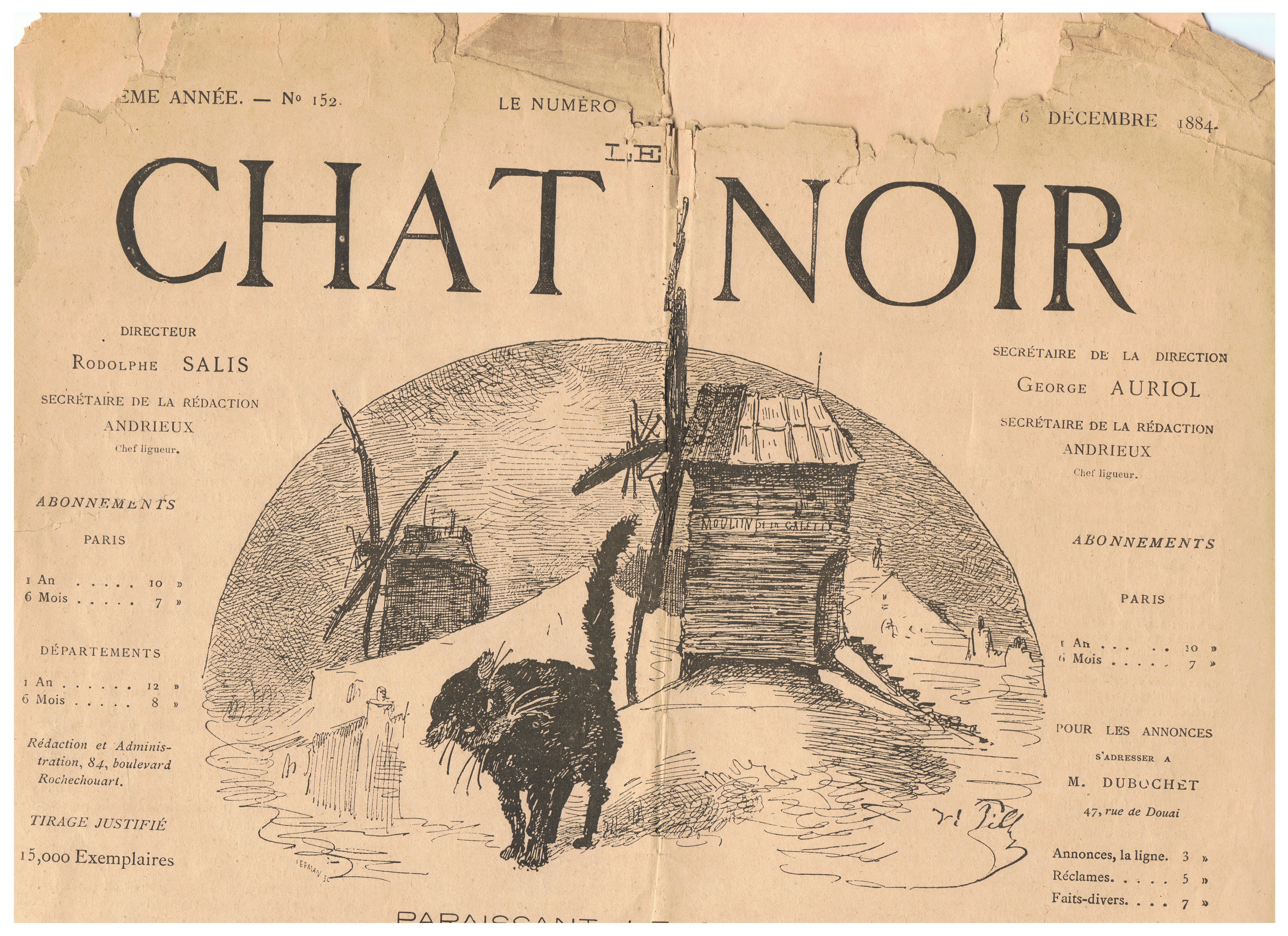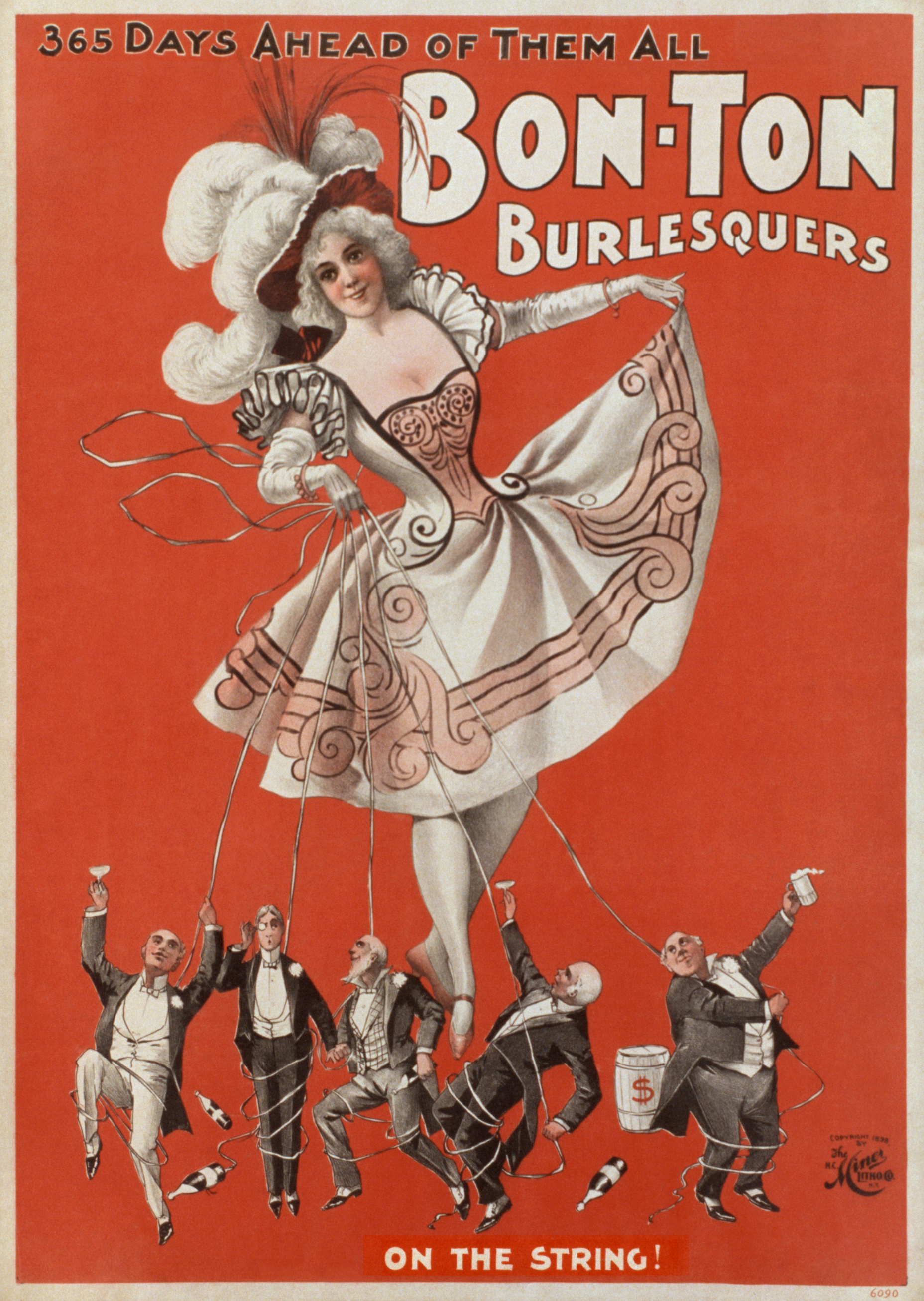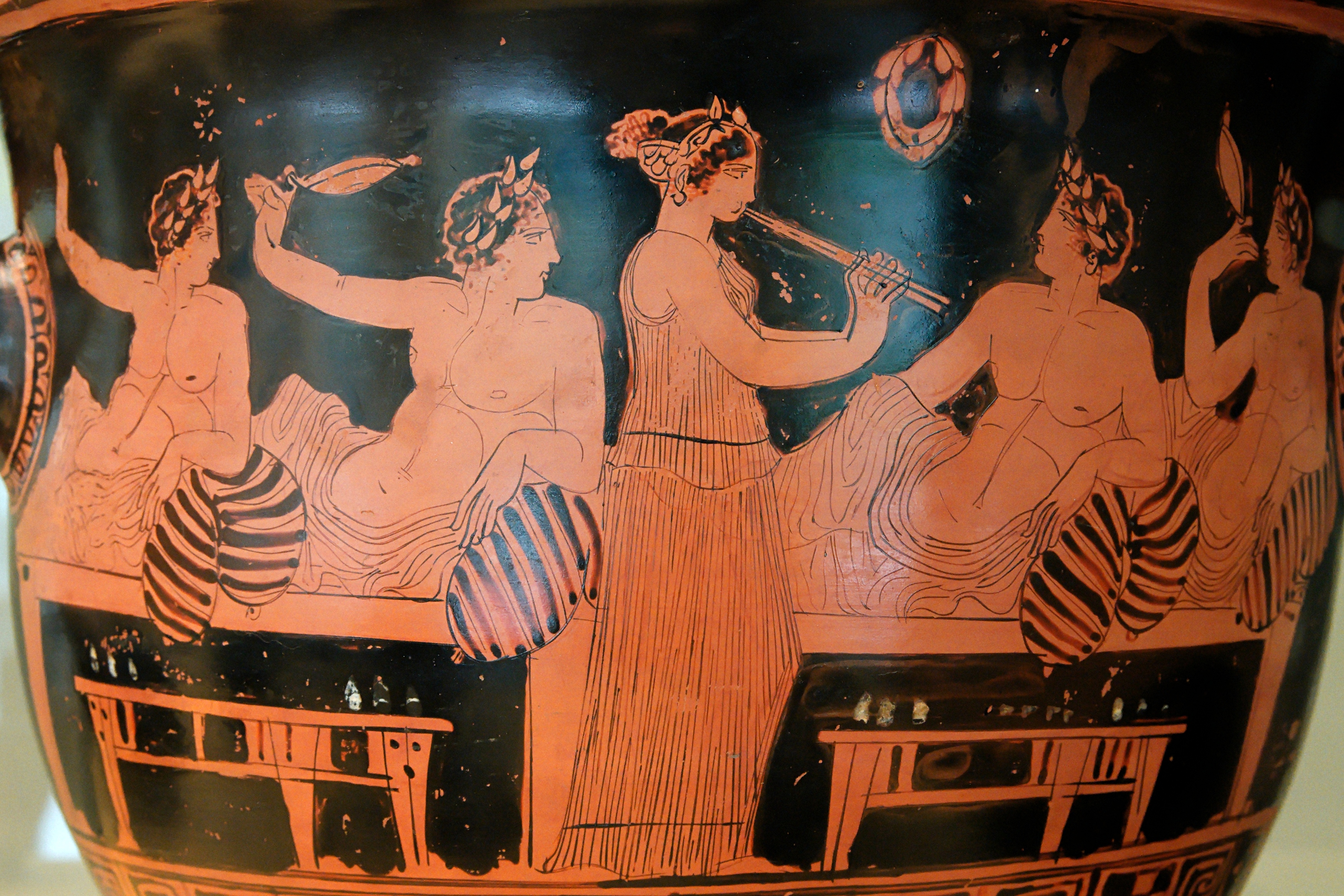|
Cabaret
Cabaret is a form of theatrical entertainment featuring music, song, dance, recitation, or drama. The performance venue might be a pub, a casino, a hotel, a restaurant, or a nightclub with a stage for performances. The audience, often dining or drinking, does not typically dance but usually sits at tables. Performances are usually introduced by a master of ceremonies or MC. The entertainment, as done by an ensemble of actors and according to its European origins, is often (but not always) oriented towards adult audiences and of a clearly underground nature. In the United States, striptease, burlesque, drag shows, or a solo vocalist with a pianist, as well as the venues which offer this entertainment, are often advertised as cabarets. Etymology The term originally came from Picard language or Walloon language words ''camberete'' or ''cambret'' for a small room (12th century). The first printed use of the word ''kaberet'' is found in a document from 1275 in Tournai. The ... [...More Info...] [...Related Items...] OR: [Wikipedia] [Google] [Baidu] |
Le Chat Noir
Le Chat Noir (; French for "The Black Cat") was a nineteenth-century entertainment establishment, in the bohemian Montmartre district of Paris. It was opened on 18 November 1881 at 84 Boulevard de Rochechouart by the impresario Rodolphe Salis, and closed in 1897 not long after Salis' death. ''Le Chat Noir'' is thought to be the first modern cabaret: a nightclub where the patrons sat at tables and drank alcoholic beverages while being entertained by a variety show on stage. The acts were introduced by a master of ceremonies who interacted with well-known patrons at the tables. Its imitators have included cabarets from St. Petersburg ('' Stray Dog Café'') to Barcelona (''Els Quatre Gats'') to London's ''Cave of the Golden Calf''. In its heyday it was a bustling nightclub that was part artist salon, part rowdy music hall. From 1882 to 1895 the cabaret published a weekly magazine with the same name, featuring literary writings, news from the cabaret and Montmartre, poetry, and ... [...More Info...] [...Related Items...] OR: [Wikipedia] [Google] [Baidu] |
Rodolphe Salis
Louis Rodolphe Salis (29 May 1851 – 20 March 1897) was the creator, host and owner of the Le Chat Noir ("The Black Cat") cabaret (known briefly in 1881 at its beginning as "Cabaret Artistique"). With this establishment Salis is remembered as the creator of the modern cabaret: a nightclub where the patrons could sit at tables with alcoholic drinks and enjoy variety acts on a stage, introduced by a master of ceremonies who interacted with the audience. Biography The son of a distiller in Châtellerault, Salis came to Paris in 1872, after leaving the regiment in which he had undertaken military service. He moved into the Hotel de Rome on Rue de Seine, in the Latin Quarter. He founded "L'école vibrante" (The Vibrant School), soon renamed the "L'école iriso-subversive de Chicago" (The Chicago Iriso-Subversive School) in order to draw attention to his artistic group. In fact he was earning a living by making stations of the cross and other religious objects, that he and his frien ... [...More Info...] [...Related Items...] OR: [Wikipedia] [Google] [Baidu] |
Restaurant
A restaurant is a business that prepares and serves food and drinks to customers. Meals are generally served and eaten on the premises, but many restaurants also offer take-out and food delivery services. Restaurants vary greatly in appearance and offerings, including a wide variety of cuisines and service models ranging from inexpensive fast-food restaurants and cafeterias to mid-priced family restaurants, to high-priced luxury establishments. Etymology The word derives from early 19th century from French word 'provide food for', literally 'restore to a former state' and, being the present participle of the verb, The term ''restaurant'' may have been used in 1507 as a "restorative beverage", and in correspondence in 1521 to mean 'that which restores the strength, a fortifying food or remedy'. History A public eating establishment similar to a restaurant is mentioned in a 512 BC record from Ancient Egypt. It served only one dish, a plate of cereal, wild fowl, and ... [...More Info...] [...Related Items...] OR: [Wikipedia] [Google] [Baidu] |
American Burlesque
American burlesque is a genre of variety show derived from elements of Victorian burlesque, music hall and minstrel shows. Burlesque became popular in America in the late 1860s and slowly evolved to feature ribald comedy and female nudity. By the late 1920s, the striptease element overshadowed the comedy and subjected burlesque to extensive local legislation. Burlesque gradually lost popularity beginning in the 1940s. A number of producers sought to capitalize on nostalgia for the entertainment by recreating burlesque on the stage and in Hollywood films from the 1930s to the 1960s. There has been a resurgence of interest in this format since the 1990s. Literary and theatrical origins The term "burlesque" more generally means a literary, dramatic or musical work intended to cause laughter by caricaturing the manner or spirit of serious works, or by ludicrous treatment of their subjects. [...More Info...] [...Related Items...] OR: [Wikipedia] [Google] [Baidu] |
Striptease
A striptease is an erotic or exotic dance in which the performer gradually undresses, either partly or completely, in a seductive and sexually suggestive manner. The person who performs a striptease is commonly known as a " stripper" or an "exotic dancer". In Western countries, the venues where stripteases are performed on a regular basis are now usually called strip clubs, though they may be performed in venues such as pubs (especially in the United Kingdom), theaters and music halls. At times, a stripper may be hired to perform at a bachelor or bachelorette party. In addition to providing adult entertainment, stripping can be a form of sexual play between partners. This can be done as an impromptu event or – perhaps for a special occasion – with elaborate planning involving fantasy wear, music, special lighting, practiced dance moves, or unrehearsed dance moves. Striptease involves a slow, sensuous undressing. The stripper may prolong the undressing wit ... [...More Info...] [...Related Items...] OR: [Wikipedia] [Google] [Baidu] |
Entertainment
Entertainment is a form of activity that holds the attention and interest of an audience or gives pleasure and delight. It can be an idea or a task, but is more likely to be one of the activities or events that have developed over thousands of years specifically for the purpose of keeping an audience's attention. Although people's attention is held by different things because individuals have different preferences, most forms of entertainment are recognisable and familiar. Storytelling, music, drama, dance, and different kinds of performance exist in all cultures and were supported in royal courts and developed into sophisticated forms, over time becoming available to all citizens. The process has been accelerated in modern times by an entertainment industry that records and sells entertainment products. Entertainment evolves and can be adapted to suit any scale, ranging from an individual who chooses a private entertainment from a now enormous array of pre-recorded pro ... [...More Info...] [...Related Items...] OR: [Wikipedia] [Google] [Baidu] |
Montmartre
Montmartre ( , ) is a large hill in Paris's northern 18th arrondissement. It is high and gives its name to the surrounding district, part of the Right Bank. The historic district established by the City of Paris in 1995 is bordered by Rue Caulaincourt and Rue Custine on the north, the Rue de Clignancourt on the east and the Boulevard de Clichy and Boulevard de Rochechouart to the south, containing . Montmartre is primarily known for its artistic history, the white-domed Basilica of the Sacré-Cœur on its summit, as well as a nightclub district. The other church on the hill, Saint Pierre de Montmartre, built in 1147, was the church of the prestigious Montmartre Abbey. On 15 August 1534, Saint Ignatius of Loyola, Saint Francis Xavier and five other companions bound themselves by vows in the Martyrium of Saint Denis, 11 Rue Yvonne Le Tac, the first step in the creation of the Jesuits. Near the end of the 19th century and at the beginning of the 20th, during the Belle Époq ... [...More Info...] [...Related Items...] OR: [Wikipedia] [Google] [Baidu] |
Café-chantant
(French: lit. 'singing café'), , or , is a type of musical establishment associated with the Belle Époque in France. The music was generally lighthearted and sometimes risqué or even bawdy but, as opposed to the cabaret tradition, not particularly political or confrontational. Although there is much overlap of definition with cabaret, music hall, vaudeville, etc., the was originally an outdoor café where small groups of performers performed popular music for the public. National variations The tradition of such establishments as a venue for music has its origins in Paris and London of the eighteenth century. Such establishments gained their widest popularity in the late nineteenth and early twentieth centuries with the growth of various other national "schools" of ''cafè chantant'' (besides French). Thus, one spoke of an Italian café chantant, German café chantant, or Austrian café chantant. For example, at least one Victorian era premises in England was known a ... [...More Info...] [...Related Items...] OR: [Wikipedia] [Google] [Baidu] |
Café Des Aveugles
A coffeehouse, coffee shop, or café is an establishment that primarily serves coffee of various types, notably espresso, latte, and cappuccino. Some coffeehouses may serve cold drinks, such as iced coffee and iced tea, as well as other non-caffeinated beverages. In continental Europe, cafés serve alcoholic drinks. A coffeehouse may also serve food, such as light snacks, sandwiches, muffins, fruit, or pastries. Coffeehouses range from owner-operated small businesses to large multinational corporations. Some coffeehouse chains operate on a franchise business model, with numerous branches across various countries around the world. While ''café'' may refer to a coffeehouse, the term "café" generally refers to a diner, British café (colloquially called a "caff"), "greasy spoon" (a small and inexpensive restaurant), transport café, teahouse or tea room, or other casual eating and drinking place. A coffeehouse may share some of the same characteristics of a bar or restaurant, b ... [...More Info...] [...Related Items...] OR: [Wikipedia] [Google] [Baidu] |
Walloon Language
Walloon (; natively ; french: wallon) is a Romance language that is spoken in much of Wallonia and (to a very small extent) in Brussels, Belgium; some villages near Givet, northern France; and a clutch of communities in northeastern Wisconsin, U.S.Université du Wisconsin : collection de documents sur l'immigration wallonne au Wisconsin, enregistrements de témoignages oraux en anglais et wallon, 1976University of Wisconsin Digital Collection : Belgian-American Research Collection /ref> It belongs to the '' langues d'oïl'' language family, the most prominent member of which is French. The historical background of its formation was the territorial extension since 980 of the Principality of Liège to the south and west. Walloon is classified as "definitely endangered" by the UNESCO '' Atlas of the World's Languages in Danger''. Despite its rich literature, beginning anonymously in the 16th century and with well-known authors since 1756, the use of Walloon has decreased marked ... [...More Info...] [...Related Items...] OR: [Wikipedia] [Google] [Baidu] |
Palais-Royal
The Palais-Royal () is a former royal palace located in the 1st arrondissement of Paris, 1st arrondissement of Paris, France. The screened entrance court faces the Place du Palais-Royal, opposite the Louvre Palace, Louvre. Originally called the Palais-Cardinal, it was built for Cardinal Richelieu from about 1633 to 1639 by the architect Jacques Lemercier. Richelieu bequeathed it to Louis XIII, and Louis XIV gave it to his younger brother, the Philippe I, Duke of Orléans, Duke of Orléans. As the succeeding dukes of Orléans made such extensive alterations over the years, almost nothing remains of Lemercier's original design. The Palais-Royal now serves as the seat of the Ministry of Culture (France), Ministry of Culture, the Conseil d'État (France), Conseil d'État and the Constitutional Council (France), Constitutional Council. The central Palais-Royal Garden (Jardin du Palais-Royal) serves as a public park, and the arcade houses shops. History Palais-Cardinal Originally cal ... [...More Info...] [...Related Items...] OR: [Wikipedia] [Google] [Baidu] |










_by_an_unknown_artist_(adjusted).jpg)